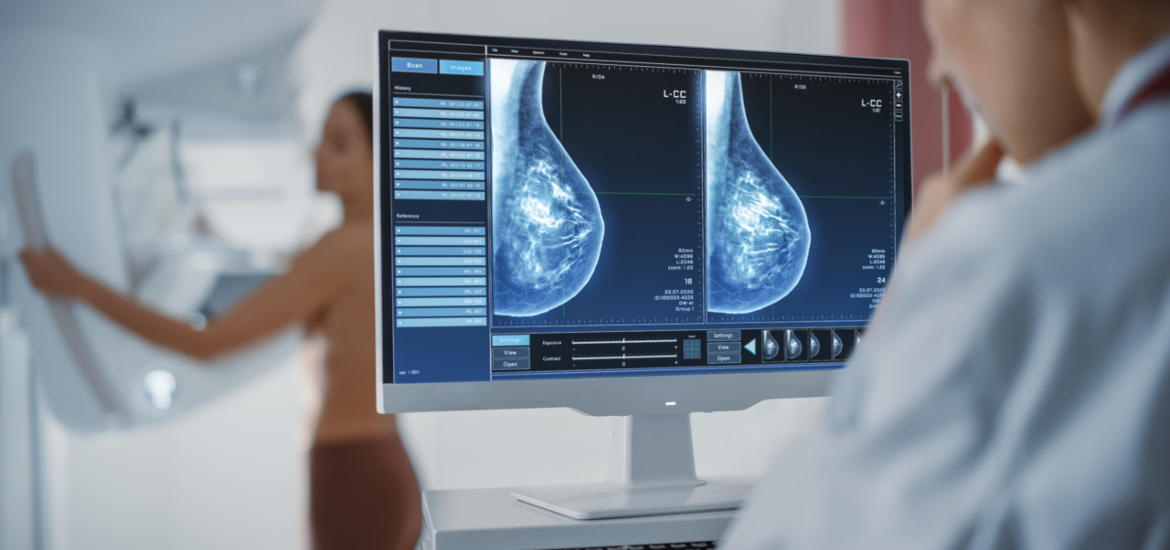
Digital mammography is the appropriate diagnostic test for breast imaging. For this particular procedure, X-rays are used to visualise the area in detail. Digital mammography now uses a digital scanner and computer instead of film, which increases the accuracy of the diagnosis while minimizing the amount of radiation emitted. This consists the most common method of preventing and early detecting breast cancer, and should be performed for the first time usually at the age of 36 or 37.
Mammography is designed to detect cancerous tumors and other alterations in breast tissue. It can investigate the existence of both palpable nodules, but also highlight non-palpable formations that are almost impossible to detect otherwise. This means that it can support the diagnosis of breast cancer that is still at a primary stage, significantly improving the prognosis.
Digital mammography can be used for either screening or diagnostic purposes. In the case of screening, it is used to detect breast changes that could be cancerous in people who have no symptoms at all. The goal is to find the cancer when it is small so that treatment is as minimally invasive as possible. In the case of a diagnostic mammogram, suspicious changes in the breast area are investigated, such as a breast lump, breast pain and nipple thickening or nipple discharge. It is also used to evaluate suspicious findings in a screening mammogram.
During the digital mammography procedure the woman stands in front of a special machine that produces X-rays. A technologist will place the breast on a flat surface. The breasts are then gradually compressed using a special device. This procedure, although sometimes is unpleasant, it is necessary for the complete imaging of the breast tissues. First, the front view of the breast is scanned and then the steps are repeated in order to obtain the image of the side view of the breast. The same procedure is then followed for the other breast.
A digital mammography is really important to be performed annually from age 40 and older. It is medically recommended that women should schedule this test when the breasts are not tender, usually during the week after menstruation. At the same time, it is important to avoid applying deodorant, powder, cream, lotion or perfume to the area under the arms or the chest, as they may be visible on the mammogram and confuse the findings. In our clinic, we focus on the patient and his special needs, with main purpose the insurance of his health.
